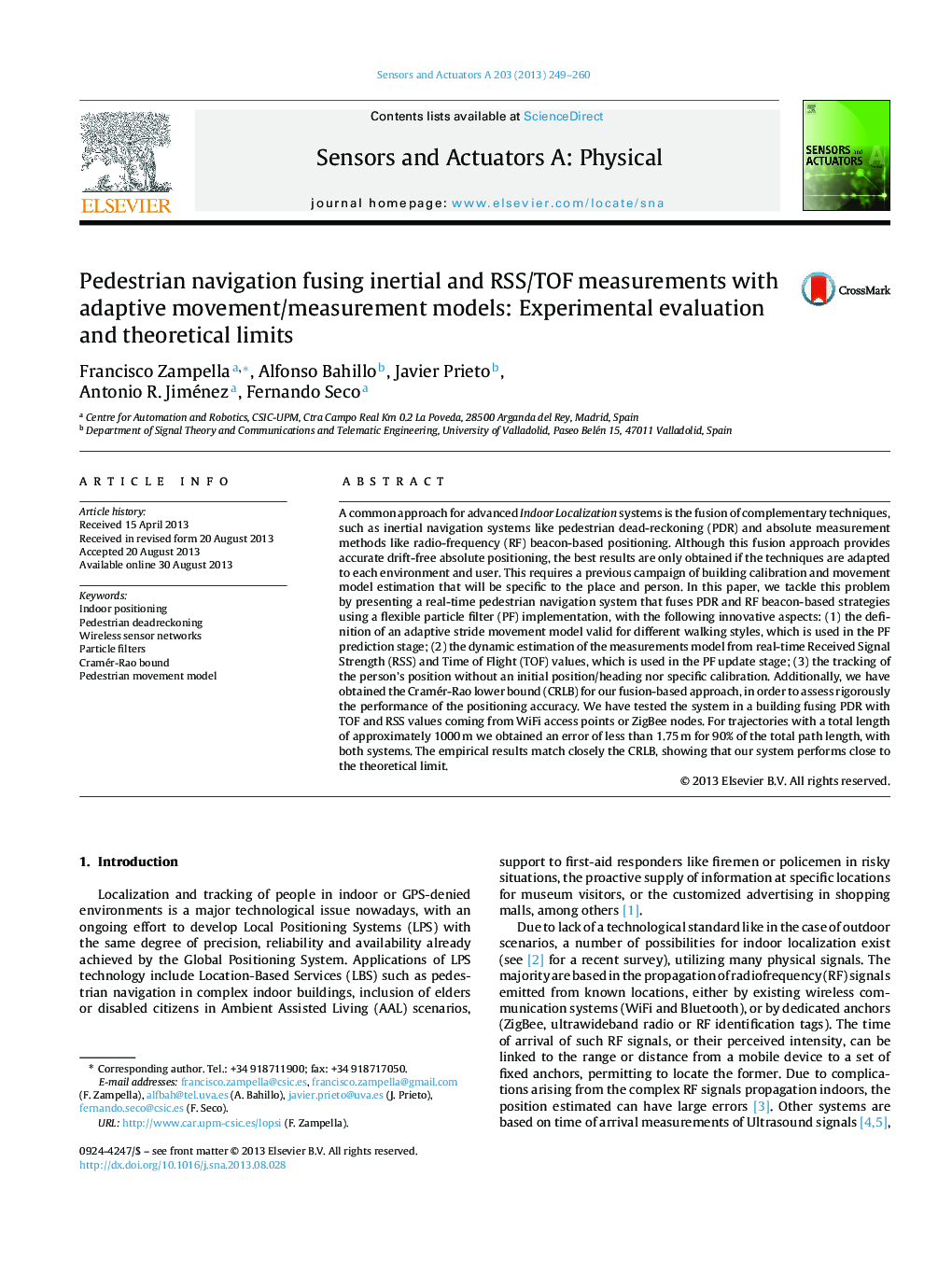| Article ID | Journal | Published Year | Pages | File Type |
|---|---|---|---|---|
| 737489 | Sensors and Actuators A: Physical | 2013 | 12 Pages |
•Fusion of pedestrian dead reckoning and range measurements with a particle filter.•Definition of an adaptive stride movement model on the prediction stage.•Dynamic estimation of the measurements model in the update stage.•Tracking the personl's position without an initial position/heading or calibration.•Measurements of the position accuracy compared with the Cramer-Rao lower bound.
A common approach for advanced Indoor Localization systems is the fusion of complementary techniques, such as inertial navigation systems like pedestrian dead-reckoning (PDR) and absolute measurement methods like radio-frequency (RF) beacon-based positioning. Although this fusion approach provides accurate drift-free absolute positioning, the best results are only obtained if the techniques are adapted to each environment and user. This requires a previous campaign of building calibration and movement model estimation that will be specific to the place and person. In this paper, we tackle this problem by presenting a real-time pedestrian navigation system that fuses PDR and RF beacon-based strategies using a flexible particle filter (PF) implementation, with the following innovative aspects: (1) the definition of an adaptive stride movement model valid for different walking styles, which is used in the PF prediction stage; (2) the dynamic estimation of the measurements model from real-time Received Signal Strength (RSS) and Time of Flight (TOF) values, which is used in the PF update stage; (3) the tracking of the person's position without an initial position/heading nor specific calibration. Additionally, we have obtained the Cramér-Rao lower bound (CRLB) for our fusion-based approach, in order to assess rigorously the performance of the positioning accuracy. We have tested the system in a building fusing PDR with TOF and RSS values coming from WiFi access points or ZigBee nodes. For trajectories with a total length of approximately 1000 m we obtained an error of less than 1.75 m for 90% of the total path length, with both systems. The empirical results match closely the CRLB, showing that our system performs close to the theoretical limit.
